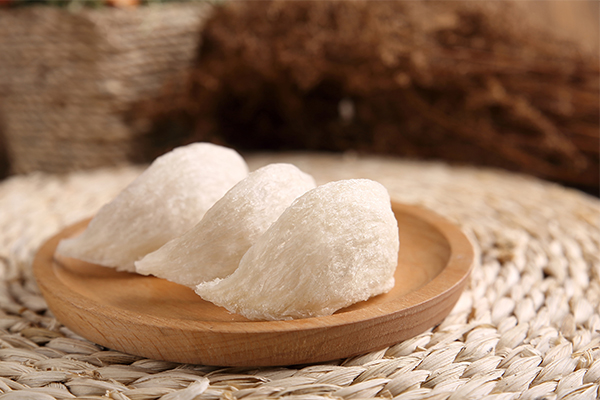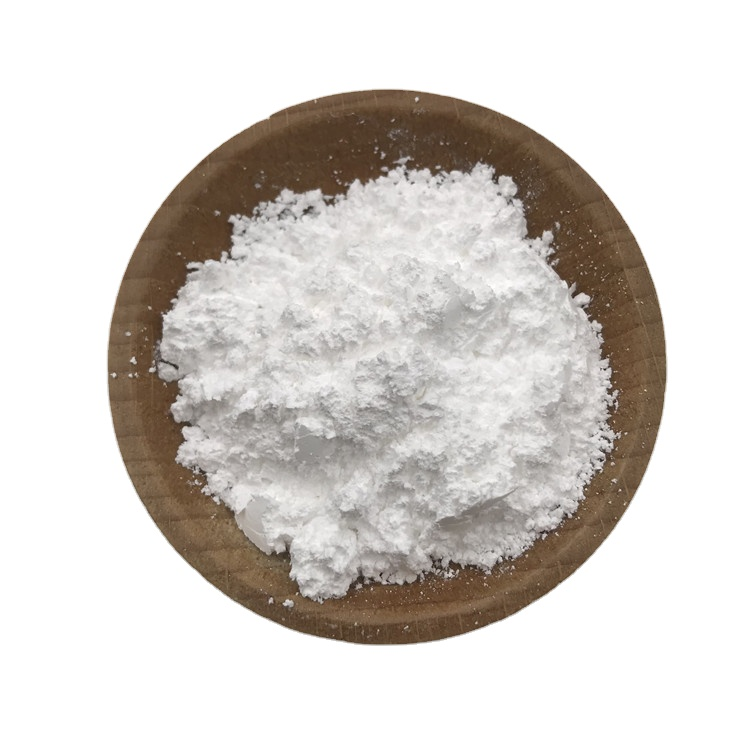What is Sialic Acid?
2023-10-19 11:45:40
Sialic acid is a type of sugar patch that's set up extensively in nature and plays different places in natural systems. Abundant on cell shells, sialic acid is involved in cellular communication, vulnerable function, and pathogen relations. This composition will give an overview of sialic acid, exploring its chemical structure, natural sources, natural functions, health counteraccusations , and crucial scientific exploration related to this interesting sugar. The focus is on expounding the multifaceted significance of sialic acid in molecular biology and mortal health.

Understanding Sialic Acid
Sialic acid, also known as N- acetylneuraminic acid( Neu5Ac), is a monosaccharide sugar belonging to a family of motes called sialic acids. Chemically, it consists of a nine- carbon backbone structure with several hydroxyl, acetyl, and carboxyl functional groups. The name" sialic" comes from the Greek word sialos meaning slaver, as sialic acid was first discovered in bovine salivary mucin.
Structurally analogous forms of sialic acid are set up across the beast area. Over 50 different variants live, but N- acetylneuraminic acid is the most common type set up in mortal cells. Sialic acid is synthesized in the cytosol from glucose metabolites and attaches to the end of sugar chains on glycoproteins and glycolipids that embellish cell shells. These sialylated motes are central to numerous receptor- ligand relations.
Natural Occurrence of Sialic Acid
Sialic acid powder is expressed extensively across human and animal tissues:
- Glycoproteins and Gangliosides - Sialic acid caps the glycan chains of membrane glycoproteins and gangliosides, contributing to the glycocalyx on cell surfaces.
- Bilateral Secretions - It is abundantly present in saliva, breast milk, bile, and seminal fluid.
- Serum Glycoproteins Sialic acid modifies serum proteins like immunoglobulins, transferrin, and haptoglobin.
- Brain Towel- Brain towel contains high attention of sialic acid-rich gangliosides which modulate neurotransmission.
The wide distribution of sialic acid highlights its diverse biological importance. It is estimated that humans synthesize over 1 gram per day, with rapid turnover of sialylated structures.

Functions and Importance of Sialic Acid
Sialic acid is involved in an array of important biological functions:
Cell-Cell Interactions - Anti-recognition properties of sialic acid regulate cell adhesion and modulate immune cell interactions.
Signaling - Sialic acids mediate recognition and transmission of molecular signals between cells.
Cognition - Gangliosides containing sialic acid influence neuroplasticity, learning, and memory.
Immune Evasion - Pathogens and tumors exploit sialic acid to evade host immune responses.
Mucosal Barrier - Concentrated sialic acid safeguards epithelial cell membranes in mucous secretions.
In summary, sialic acid governs many crucial physiological and pathological processes related to cellular communication, development, immunity, and disease.
Health Implications of Sialic Acid
Altered sialic acid expression has been linked to several complaint states
Cancer Progression- Overexpression of sialic acid contributes to metastatic eventuality in cancers like carcinoma, carcinoma, and ovarian cancer.
Inflammation- Sialic acid is intertwined in certain habitual seditious conditions similar as asthma, seditious bowel complaint, and rheumatoid arthritis.
Infections- Recognition of sialic acid by pathogens facilitates microbial infections by contagions, bacteria, and protozoa.
Autoimmunity- Antibodies against sialic acid structures are involved in certain autoimmune diseases.
Neurodegeneration- Ganglioside declination and bloodied sialylation are associated with neurodegenerative conditions like Alzheimer's.
The associations between aberrant sialylation and mortal pathophysiology accentuate the clinical applicability of sialic acid.
Scientific Research and Evidence
Key scientific findings related to sialic acid:
- Human milk oligosaccharides containing sialic acid promote gut colonization with beneficial Bifidobacteria in breastfed infants. This enhances immunity in early life.
- Mice unable to synthesize sialic acid show impaired learning, memory, and neurogenesis highlighting its crucial role in the nervous system.
- Removal of sialic acids from cancer cells using sialidase enzymes helps expose them to immune detection, representing a potential therapeutic approach.
- Influenza contagions use hemagglutinin proteins to bind sialic acids on host cells as the original step in the infection process.
- Serum sialic acid situations are elevated in type 2 diabetes, reflective of systemic inflammation and insulin resistance.
Overall, a wealth of exploration continues to unravel the mechanistic and clinical significance of sialic acid in health and complaint.
Natural Sources of Sialic Acid
Dietary sources of sialic acid include:
- Dairy - Milk, cheese, yogurt, whey protein
- Eggs - Contains gangliosides with sialic acid.
- Meat - Red meats like beef and pork.
- Seafood - Fish, shellfish are rich sources.
- Poultry - Chicken and turkey meat.
- Colostrum - High levels in first breast milk.
Though sialic acid is found mainly in animal-derived foods, certain vegetables and fruits also provide small amounts. Nutritional intake of sialic acid may support immune function, cognition, and metabolic health.
What is the function of sialic acid?
Sialic acid powder has several key biological functions:
- It masks recognition sites on cell surfaces to protect against immune attack. This prevents inappropriate complement activation and phagocytosis.
- It mediates cell-cell communication and adhesion by interacting with selectins and siglecs. This regulates processes like inflammation, axon myelination, and tumor metastasis.
- It acts as a receptor for pathogens and toxins, facilitating microbial and viral entry into cells during infection.
- It provides structural integrity and hydration to mucus layers protecting epithelial surfaces in the eyes, lungs, GI tract and reproductive system.
Overall, sialic acid governs many cellular recognition events central to immunity, cell signaling, development, and pathogen interactions.
Is sialic acid a protein?
No, sialic acid isn't a protein. It's a monosaccharide sugar patch that attaches to the terminal ends of glycan chains on glycoproteins and glycolipids set up on cell shells and within apkins. While not a protein itself, sialic acid modifies numerous glycoproteins to alter their structure and function. It also combines with sphingosine to form gangliosides, a type of glycolipid abundantly found in nerve cell membranes.
What is another name for sialic acid?
Sialic acid is also appertained to as N- acetylneuraminic acid or Neu5Ac. This 9- carbon monosaccharide was first discovered in bovine salivary gland mucin, which led to the origin of its name from the Greek word for slaver-" sialos". The terms sialic acid and N- acetylneuraminic acid can be used interchangeably to relate to the predominant form set up in mortal cells and apkins.
What is an example of a sialic acid?
N-acetylneuraminic acid (Neu5Ac) is the most common type of sialic acid found in humans. Other examples include:
- N-glycolylneuraminic acid (Neu5Gc) - second major form, differs by one oxygen atom.
- Deaminoneuraminic acid (KDN) - lacks the N-acetyl group.
- O-Acetylneuraminic acid - additional O-acetyl group modification.
Over 50 identified variants of sialic acid exist in nature, usually differing in hydroxyl, acetyl, or glycosidic side groups bound to the core 9-carbon structure. These minor differences influence the biological properties and recognition of distinct sialic acid forms.
What is the most common sialic acid in humans?
N- acetylneuraminic acid( Neu5Ac) is the predominant form of sialic acid expressed in mortal cells and apkins. It accounts for over 90 of detected sialic acids in the mortal body. Other minor forms include N- glycolylneuraminic acid( Neu5Gc, up to 4) and O- acetylneuraminic acid( lower than 1).
Conclusion
Sialic acid is a multifunctional sugar molecule widely found across vertebrate tissues and secretions. Its distinctive chemistry and strategic placement on cell surface glycans underpin a diverse array of molecular recognition events that govern immunity, development, cell signaling, and disease progression. Ongoing research continues to provide insights into the biological roles of sialic acid and related therapeutic opportunities. Increased understanding of this versatile sugar residue promises to enable advances in glycobiology and biomedicine.
Hubei Sanxin Biotechnology Co., Ltd. integrates the research and development, production and sales for many years. We are your reliable Sialic Acid Powder wholesaler. We can supply customized service as your request.
Email: nancy@sanxinbio.com
References:
1. Varki A. Biological roles of glycans. Glycobiology. 2017;27(1):3-49.
2. Schauer R. Sialic acids as regulators of molecular and cellular interactions. Curr Opin Struct Biol. 2009;19(5):507-14.
3. Pearce OM, Laubli H. Sialic acids in cancer biology and immunity. Glycobiology. 2016;26(2):111-28.
4. Cohen M, Varki A. The sialome-far more than the sum of its parts. OMICS. 2010;14(4):455-64.
5. Angata T, Varki A. Chemical diversity in the sialic acids and related alpha-keto acids: an evolutionary perspective. Chem Rev. 2002;102(2):439-69.
6. Wang B, Brand-Miller J. The role and potential of sialic acid in human nutrition. Eur J Clin Nutr. 2003;57(11):1351-69.
7. Burrell HE, Wiedmeier J, Richardson A, et al. Human Milk Oligosaccharides Promote Sialic Acid-Dependent Inhibition of Viral Attachment. J Nutr. 2020;150(11):2870-2876.
8. Schauer R. Achievements and challenges of sialic acid research. Glycoconj J. 2000;17(7-9):485-99.